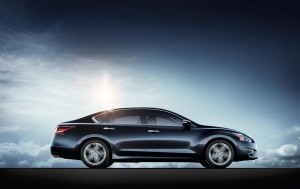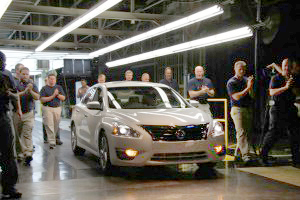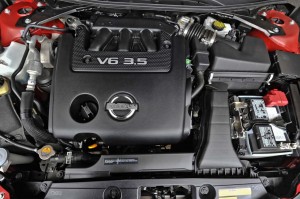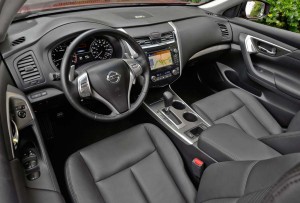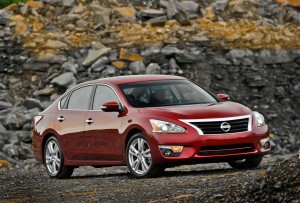Japanese automakers have long dominated the U.S. midsize passenger car market. Or, to be more precise, Toyota, with its Camry, and Honda, with the Accord, have been the manufacturers to reckon with.
But in recent months, the established order has shown signs of coming undone. Sales of the Camry took a dive – in part due to last year’s production shortages – until the maker ramped up its marketing and incentives and dumped tens of thousands of the sedans into rental and other fleets. The aging Accord has had even more trouble as it approached the end of its lifecycle.
Surprisingly, even though it was also due for replacement demand for the outgoing Nissan Altima, however, showed some unexpected resilience, surging towards the top of the sales charts. And now, with Nissan about to roll out an all-new 2013 version of the sedan CEO Carlos Ghosn has boldly predicted the new model will topple Camry as the king-of-the-hill.
(Click Here for more on Ghosn’s plans for the new Nissan Altima.)
Is the 2013 Nissan Altima up to the challenge, however? That’s what we wanted to know as we set off to drive the new sedan during a ramble through the Tennessee countryside. Top-to-bottom, we discovered, the new Nissan Altima is a dramatic improvement over the old model: more attractive, more fun to drive and decidedly more up-market in both its interior and technology content.
The Altima is just one of an assortment of new products coming from Nissan which has set itself some very aggressive sales and profit goals worldwide. But few new models will likely be more important to the brand, especially in the U.S. where, if anything, many motorists are shifting back to the midsize passenger car segment to counter rising fuel costs.
The fifth-generation Altima lands 20 years after the original model made its debut, Nissan pushing a bit upmarket from the more econbox Sentra line.
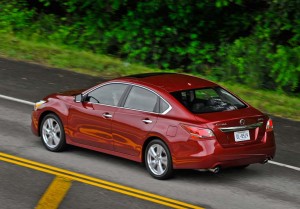
The 2013 Nissan Altima is slightly longer and wider -- but about 79 pounds lighter than the old sedan.
Like so many of its competitors, the Altima has grown over the years, and the 2013 model, in particular, is a bit longer and wider than the sedan it replaces. But, significantly, it has also lost weight, its overall mass down 79 pounds, to approximately 3,100 lbs with the 2.5-liter inline-four, thanks to some smart engineering and the expanded use of lightweight materials, like aluminum for the trunk, roof and hood. That means it will likely be both the lightest vehicle in the segment and the most fuel-efficient, (depending on what Honda delivers with the new Accord).
Nissan expects a rating of 38 miles per gallon on the highway, or about 1 mpg better than the Eco versions of both the 2013 Chevrolet Malibu and Ford Fusion sedans, 3 better than the all-new 2012 Camry, and a full 7 over the latest Volkswagen Passat. The city rating is 27, with a combined average of 31 mpg.
The 3.5-liter V-6 is set at 22 City, 31 Highway, 25 Combined, according to the feds.
What’s impressive is that Nissan is delivering those numbers without sacrificing the fun-to-drive quality that has been a key part of the previous Altima’s DNA. Anything but. That 2.5-liter base engine makes a solid, if not benchmark, 182 horsepower and 180 lb-ft of torque. That’s enough to snap it from 0 to 60 in about 7.1 seconds, according to Nissan.
The 3.5-liter V-6 pulls about a second off that figure, making 270 hp and 258 lb-ft of torque. Nissan is one of an increasingly small niche of manufacturers still offering a V-6 in the midsize segment, incidentally.
Ironically, until recently, the debate was why a maker like Hyundai might switch to an all-four engine line-up. Now, we find, many media colleagues are second-guessing Nissan for retaining a V-6. For those who want maximum off-the-line launch feel it’s a good choice, though the maker admits only about 10% of Altima buyers who will opt for the bigger engine. And, several well-placed insiders tell TheDetroitBureau.com they would not be surprised if the six-banger disappeared before it was time for a sixth-generation Altima.
Both I4 and V-6 Altimas share variants of the latest-generation Nissan CVT gearbox, which seems to deliver the trifecta of being lighter, crisper and more fuel-efficient all at the same time.
We’ve heard a lot about CVTs – or Continuously Variable Transmissions – over the year. And we’ve found they seldom live up to the hype. Most don’t deliver the promised fuel savings, and the vast majority suffer from that unpleasant rubber-band effect where the engine races up towards red line while the vehicle lags behind.
The 2013 Nissan Altima does exhibit some rubber –banding, but far less than most CVT-equipped vehicles. And it’s all but indistinguishable from a conventional step-gear automatic when shifted into Sport mode – with relatively little fuel economy penalty.
What particularly impressed us was the overall feel of the vehicle. Compared to the relatively numb 2012 Camry and even the more sporty VW Passat, the Altima is, to our minds, the most fun-to-drive of the bunch. That’s especially satisfying considering the 2013 Nissan opts for an electric power-steering system that could have gone just plain numb. Instead, it exhibits extremely good road feedback, with just the right amount of progressively decreasing boost as you accelerate. It is precise and predictable. And the steering feel is matched by the overall suspension dynamics.
The car features a new corner control system that subtly compensates for a driver that goes into a turn over-aggressively. And the basic suspension has been designed to provide the feel of all-wheel steering to enhance its overly sportiness.
One downside is that you feel the added mass of the V-6 in the corners and on the highways, those pounds also seemed to bear down on the suspension driving a bit too much harshness through the steering wheel, especially on rougher pavement.
The 2013 Nissan Altima has lifted a page from the German marketing handbook, offering a wide range of tech features that require you to move up the price spectrum – though even the base sedan is reasonably well equipped – with such niceties as Bluetooth — at $2,050 before adding in delivery charges. The Nissan Altima 3.5L with the bells-and-whistles tech package will push above $31,000.
For the must-have-it motorist, Nissan offers Blind Spot Detection, a slick infotainment system that includes a very functional navigation computer displayed on a large and high-res LCD screen topping the center stack.
Not all the new features are high-tech, by the way. Nissan has taken inspiration from NASA, developing an intriguing “Zero-Gravity” seat that, while not shedding your unwanted pounds does make you feel a lot more comfortable even on a very long drive.
The maker has also come up with a creative way to deliver some desirable safety features without pricing the car out of reach. A slick rearview camera system also serves as the base for Land Departure Warning and Moving Object Detection – which can spot a child on a tricycle, for example, as well as a car coming at you from the side while you back out of a parking space.
The maker also introduces the new Easy Fill Tire Alert system, which makes it all but impossible to ignore the fact that your tires are underinflated. Unlike most models in the midsize segment which only signal that one of your tires is low, the 2013 Altima tells you precisely which one. And when you go to pump air, it will use the flashers and horn to ensure you get to the precise recommended pressure – without requiring a tire gauge.
(For more on the Easy Fill Tire Alert system, Click Here.)
On the whole, the 2013 Nissan Altima is a stylish and fun-to-drive update for an already competent if not especially exciting sedan. Our drive suggested that with some savvy marketing Nissan just might be able to topple the midsize segment’s king-of-the-hill.

